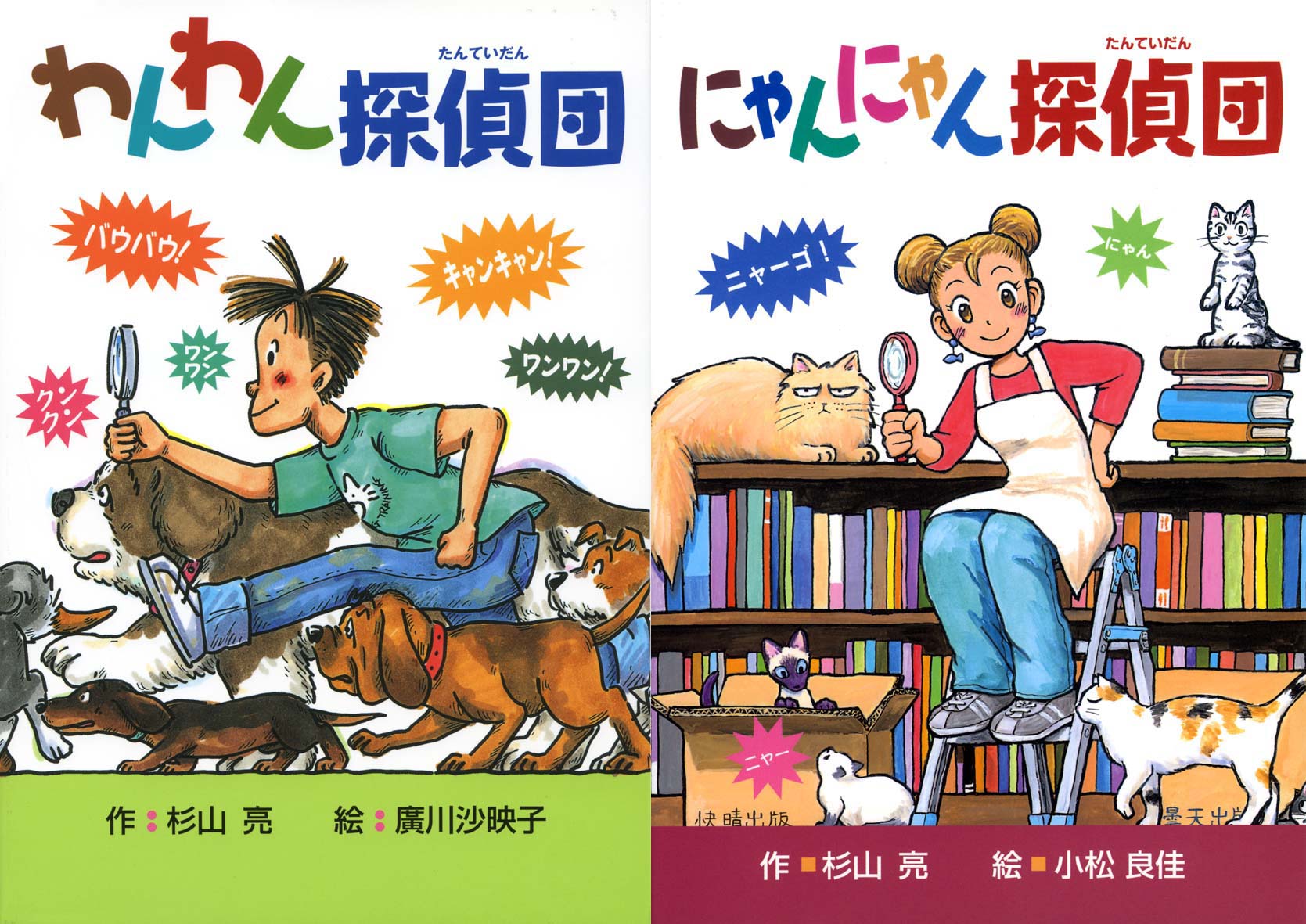
Here is a series of picture books called わんわん探偵団 (Doggy Detectives) and にゃんにゃん探偵団 (Kitty Detectives). Both are mystery-solving stories of amateur detectives with furry sidekicks! 🐶🐱
The main character of わんわん探偵団, Spitz Kawai, is a dog trainer, who brings stray dogs home and takes care of them. In each chapter, he gets involved in a criminal (or not-so-criminal) case and tries to solve it with his dogs. He also gets help from a different breed of dog in each case, and you get to learn about them too! にゃんにゃん探偵団 is a spin-off series of わんわん探偵団, where Spitz Kawai's crush, Hanae, the owner of a children's book store, solves mysterious incidents that happen in the town with her cat.
What makes this series extra fun is that each chapter is divided into two parts — an introduction to the case, then the case-solving part. This way, you get to guess who the culprit could be on your own and enjoy mystery solving! There are more mysteries available in the series when you finish reading your first volume — the crime rate in town is over the woof! 🐾
For Japanese Learners
This book series will be the perfect starter if you've only ever read graded readers before. People from the absolute beginner book club on the WaniKani Community seem to enjoy it as well. The volume of text on each page is not overwhelming (it uses a nice, big, and readable font), and each story, as well as the whole book, is relatively short. Every page has cute illustrations, which you can use as visual cues. The sentences tend to be simply structured, and the frequent use of punctuations and spaces makes it easy to distinguish between words (which is hard sometimes, especially in a book with a bunch of kana). Although some words are written in all kana, you still get to practice reading kanji, which all have furigana alongside them.
Both わんわん探偵団 and にゃんにゃん探偵団 are mainly written in plain form (for example, だ instead of です and いる instead います). The style of each series is slightly different because the storytelling is done from the perspective of the main characters. わんわん探偵団's main character, Spitz Kawai, has a more masculine speaking style, whereas にゃんにゃん探偵団's Hanae's style is more feminine.
Now, take a look at some sample pages to see what the actual reading experience would be like! Oh also, in case you haven't read any Japanese books before, bear in mind that they read from right to left. (It's the opposite of English books.)
Comments From Fellow Japanese Learners
Even though it's a picture book targeted towards children, I enjoyed reading it a lot. It's not too text-dense, but the grammar is still challenging enough for the N4 level, and you can get used to reading longer texts, I think. It is classified as an "Absolute Beginner" book in the Master List of Book Clubs in the forums. However, in my opinion, that's only because of the reading speed/schedule (about one page a day). The cases were interesting enough to keep me reading even though I'm not a child anymore. ;)
fray
にゃんにゃん探偵団 was the first book I read in Japanese! I read it shortly after passing the JLPT N4. The book is very lighthearted and cute and features a lot of cats. Even though I knew grammar and vocab up to N4, reading the first episode of this book was mentally draining. The episodes are short, and the content is rather simple and easy, which makes it a good beginner book. With this book, you can get used to reading something completely in Japanese without becoming overwhelmed. During the course of the book, I could tell that I was making progress by each episode becoming easier to read. As I got used to it, I was also able to read more in one sitting without feeling drained. Some cons might be: it's aimed at kids, which is not everyone's cup of tea. The abundance of kana makes it harder as well.
Belerith
Useful Links
- わんにゃん探偵団 WaniKani Book Club
Check it out for useful resources and information such as shared vocabulary lists, discussions, emotional support, and more! - Sample Pages
A good chunk of the first pages of わんわん探偵団 (volume one) are available as a sample. - わんわん探偵団 Amazon.co.jp
This is the first book of the わんわん探偵団 series🐶 - にゃんにゃん探偵団 Amazon.co.jp
This is the first book of the にゃんにゃん探偵団 series🐱